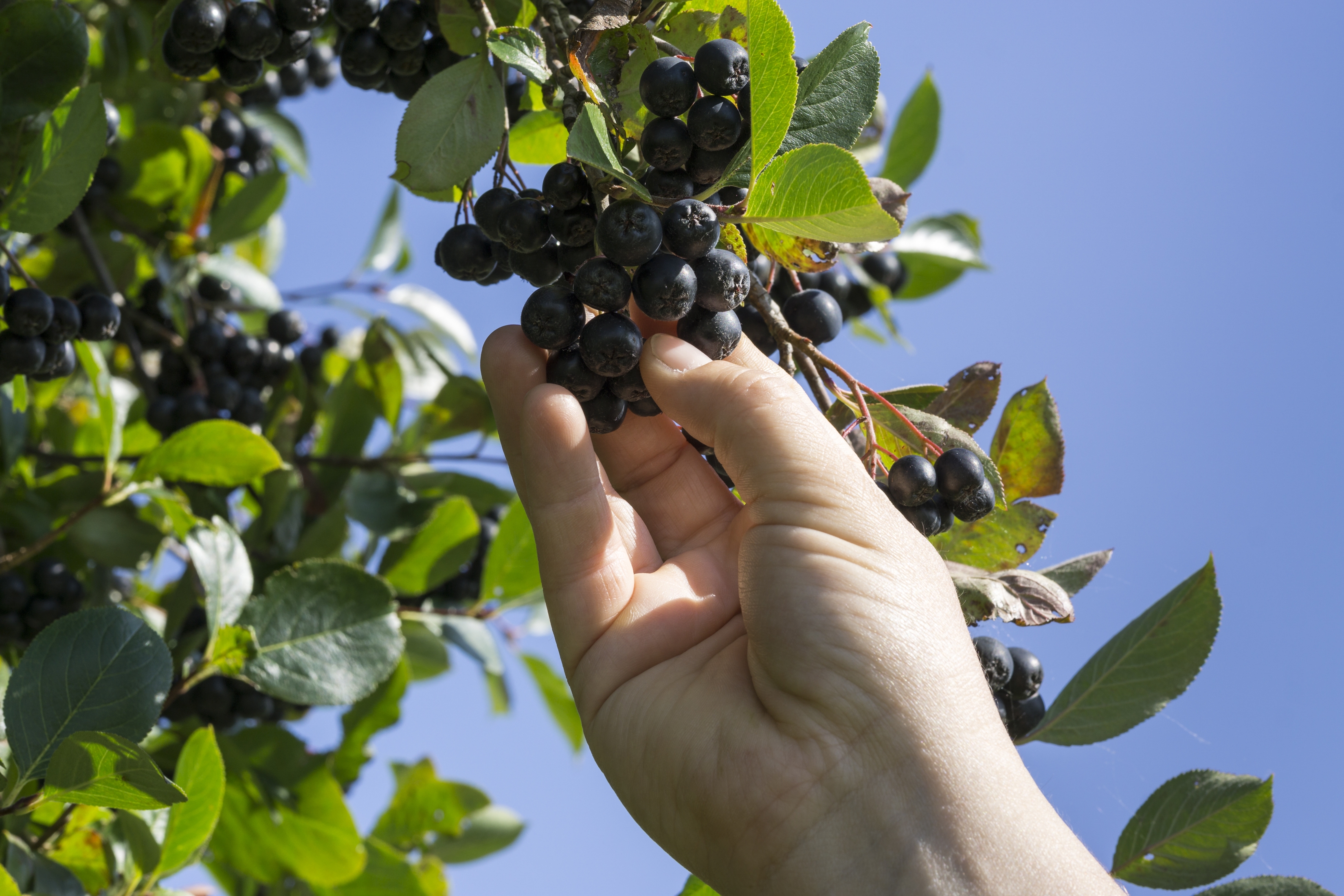Chokecherry
The chokecherry, Prunus virginiana, is a native shrub or small tree that graces the landscapes of North America, particularly prevalent in Alberta. Recognized by its clusters of white blossoms in the spring, followed by the development of dark, small cherries in late summer, the chokecherry plays a significant role in local ecosystems and holds cultural and culinary importance, especially among Indigenous communities. In Siksika, this fruit is known as pa'kip and is used to make cakes and pemmican.

More on Chokecherry
About
Chokecherry plants are hardy, deciduous shrubs or trees that can grow up to 20 feet tall. The leaves are oval, with finely toothed margins, and the plant produces fragrant racemes of white flowers that attract various pollinators. The resulting berries are deep red to black when ripe, and while they are quite astringent when eaten raw, they have a rich flavour profile that shines when processed. Beyond its culinary uses, the chokecherry serves as a vital food source for various wildlife, from birds to mammals, ensuring its ecological significance.
History
For millennia, Indigenous peoples of Alberta and other parts of North America have held the chokecherry in high esteem. It has been used in traditional medicine for its therapeutic properties, with various parts of the plant addressing different ailments. Beyond medicine, the chokecherry has been a staple food source. The berries are often mixed with other ingredients, like meats or fats, to produce pemmican – a nutritious and long-lasting food source that was essential for nomadic lifestyles and long journeys.
Ways To Cook
Despite their raw astringency, chokecherries transform into delightful culinary creations with a bit of processing. They are commonly made into jellies, jams, and syrups, where their tartness can be balanced with sweeteners. Chokecherry syrup or sauce can be a delectable accompaniment to pancakes, waffles, or even meats like game or poultry. Chokecherries are also used in winemaking, producing a unique wine with a characteristically North American touch.
When preparing chokecherries, it's important to note that the seeds, like other members of the Prunus genus, contain cyanogenic compounds and should be discarded. As a testament to its adaptability and versatility, chokecherry finds its way into modern dishes and traditional preparations, continuing to be a cherished part of Alberta's food heritage.
Some Of Our Favourite Videos
Alberta Chokecherry Producers
Green Valley Acres
About this producerHidden Valley Garden
About this producerFoods from this producer:
-
- Vegetables
Lettuce
-
- Vegetables
- Leafy Greens
Kale
-
- Vegetables
Chard
-
- Vegetables
- Roots and Tubers
Beet
-
- Vegetables
- Roots and Tubers
Carrots
-
- Vegetables
- Cabbage Family
Cabbage
-
- Vegetables
Green Bean
-
- Vegetables
Potatoes
-
- Vegetables
Pea
-
- Vegetables
- Roots and Tubers
Rutabaga
-
- Vegetables
Pumpkin
-
- Vegetables
Zucchini
-
- Herbs & Spices & Flavourings
- Culinary Herb
Dill
-
- Herbs & Spices & Flavourings
- Culinary Herb
Chives
-
- Fruit
Saskatoon Berry
-
- Fruit
Raspberry
-
- Fruit
Chokecherry
-
- Fruit
Black Currant
-
- Fruit
Rhubarb
D & A Gardens
About this producerFoods from this producer:
The Berry Farm (at Christie's Corner)
About this producer-
Green Valley Acres
Green Valley Acres, Alberta 41, Irvine, AB, Canada
-
Hidden Valley Garden
Hidden Valley Garden, 1271 Township Road 392, Red Deer County, AB, Canada
-
D & A Gardens
DNA Gardens, Range Rd 230, Elnora, AB, Canada
-
The Berry Farm (at Christie's Corner)
52002 Range Road 232, Sherwood Park, AB T8B 1B3, Canada
